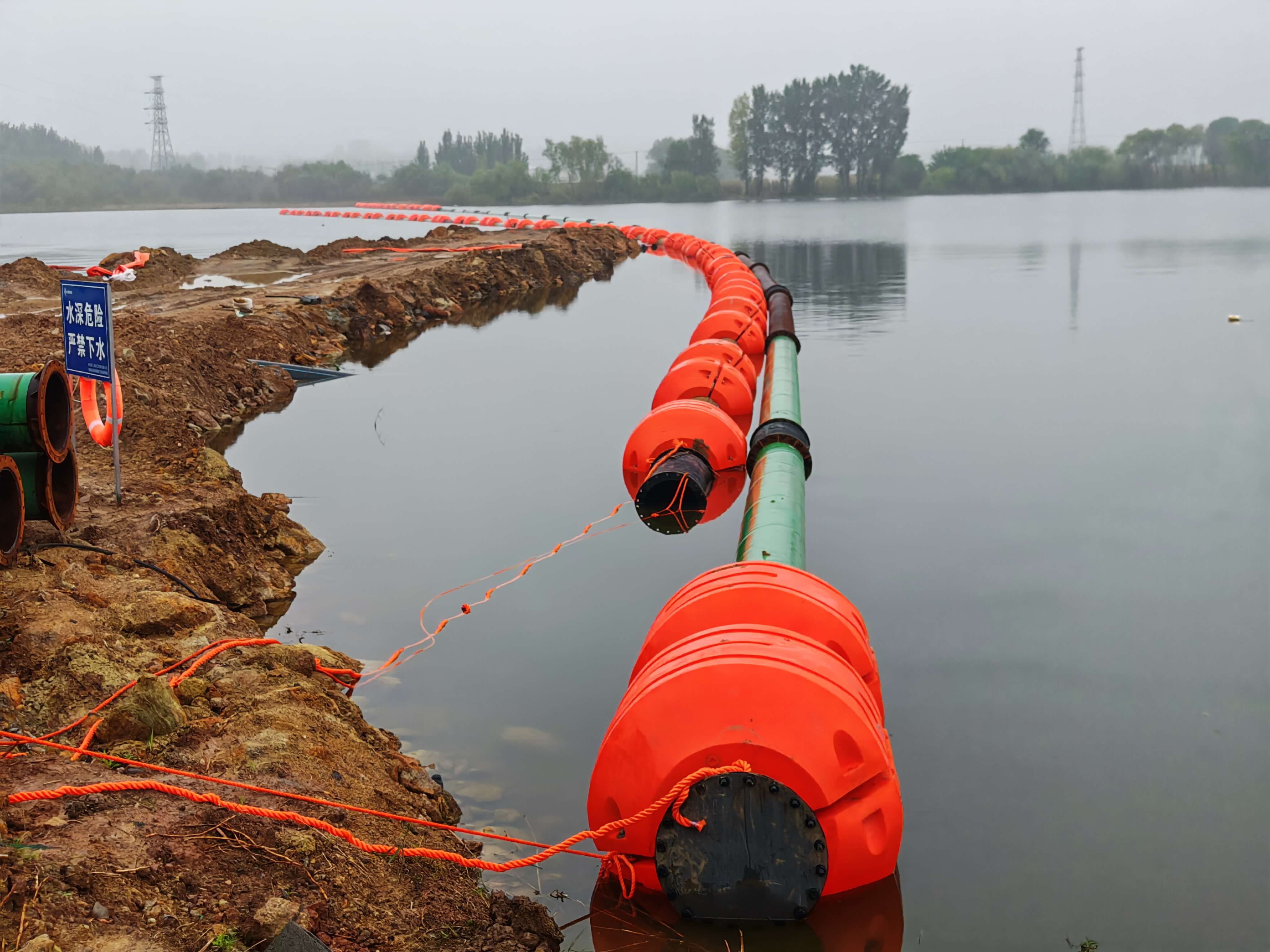Selecting the right pipeline floats is not just about buoyancy—it’s about ensuring project efficiency, safety, and long-term cost savings. Whether you are operating a marine construction site, a port expansion project, or a water management system, the correct float configuration can make the difference between smooth operations and costly downtime.
1. Understanding What Pipeline Floats Actually Do
Pipeline floats are modular components designed to keep pipelines stable and visible when operating on or near the water surface. Their role goes beyond keeping things afloat—they ensure alignment, prevent abrasion, and maintain system integrity under dynamic water conditions.
Key purposes include:
-
Stability: Keeps pipes from twisting or sinking.
-
Protection: Shields from surface impacts and bottom friction.
-
Visibility: Improves safety for vessels and on-site workers.
-
Efficiency: Reduces resistance and energy loss in fluid transfer.

2. Factors to Consider When Selecting Pipeline Floats
When choosing the right model for your project, it’s essential to evaluate several technical and operational aspects:
a. Pipe Diameter and Weight LoadMatch the float’s buoyancy rating to your pipe’s outer diameter and fluid weight. For example, a 500 mm pipe typically requires a float chamber volume of 0.2–0.4 m³ for balanced support.
b. Environmental ConditionsAssess whether your pipeline will face strong currents, high salinity, or UV exposure. Premium floats often feature double-layer reinforcement and UV-stabilized coatings for enhanced endurance.
c. Installation FlexibilityChoose floats that feature bolt or clamp designs for quick mounting—reducing on-site labor time by up to 35%.
d. Longevity and MaintenanceWell-designed pipeline floats can operate for over 8–10 years with minimal maintenance, offering significant lifecycle cost advantages.
3. Field Case: On-Time Delivery for a Port Expansion Project
A recent shipment of over 600 float units was completed for a major port expansion. Each float was pre-tested for buoyancy accuracy and color-coded per section, allowing local installation teams to deploy the system in just 48 hours. The result: reliable performance under 24-hour operational conditions and zero alignment failures during load transfer.
4. Why Quality Pipeline Floats Pay Off
-
Reduce project installation time by up to 30%
-
Extend pipeline service life by 40%
-
Minimize risk of leakage and breakage
-
Allow modular reconfiguration for future projects
Reliable pipeline floats are more than accessories—they are a critical safeguard for capital-intensive infrastructure.

Choosing the right pipeline floats involves technical precision and operational insight. Consider your pipe size, water conditions, installation setup, and long-term maintenance needs. A durable, well-engineered float system helps projects stay on schedule, within budget, and fully compliant with safety standards.
FAQs
Q1: How do I know what size float to use?Measure your pipe’s diameter and weight when filled. Manufacturers can calculate the required buoyancy per meter to maintain even support.
Q2: Are pipeline floats suitable for long-term marine use?Yes, they are designed for multi-year exposure to sunlight, saltwater, and pressure changes with minimal maintenance.
Q3: Can pipeline floats be reused for other projects?Absolutely. Their modular, non-permanent design allows reuse across different operations and site conditions.
Q4: What’s the best installation method?Most operators prefer clamp-type designs for faster assembly without special tools or welding.
Media Contact
Company Name: Shandong Binzhou Juhua Rubber & Plastic Co., Ltd.
Email: Send Email
Country: China
Website: https://www.pefloaters.com/
